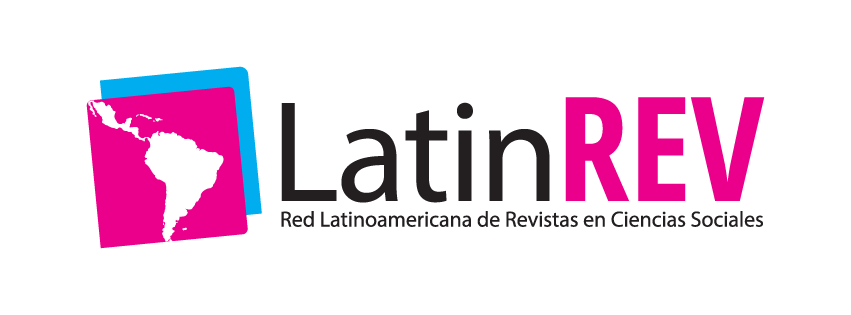Mitigación del estrés universitario en el contexto del regreso a las aulas pospandemia
DOI:
https://doi.org/10.46990/relep.2025.7.2.2135Keywords:
burnout, COVID-19, educación a distancia, educación presencial, estrésAbstract
Este estudio indaga cómo los estudiantes universitarios reaccionan a un alto nivel de estrés, como el ocurrido tras el abrupto retorno a las aulas pospandemia, y qué pueden hacer las instituciones educativas para reducirlo. Se utilizó una encuesta cualitativa en línea, la cual se aplicó a 51 estudiantes de Ingeniería Ambiental. Los resultados muestran que los estudiantes recurren principalmente a actividades tranquilas y personales, como escuchar música; por ello, se debe evitar sobrecargas de trabajo y recibir apoyo psicológico. Se concluye que es factible que las instituciones educativas brinden el apoyo necesario para reducir el estrés estudiantil.
Downloads
References
Aristegui Noticias (1 de agosto de 2022). Lanza IPN pulsera inteligente
para detectar altos niveles de estrés en estudiantes. https://aristeguinoticias.com/0108/mexico/lanza-ipn-pulsera-inteligente-para-detectar-altos-niveles-de-estres-en-estudiantes/.
Behere, S. P., Yadav, R. y Behere, P. B. (2011). A comparative study of stress
among students of medicine, engineering, and nursing. Indian
Journal of Psychological Medicine, 33(2), 145-148. https://doi.
org/10.4103/0253-7176.92064.
Chandra, Y. (2021). Online education during COVID-19: perception of
academic stress and emotional intelligence coping strategies
among college students. Asian Education and Development
Studies, 10(2), 229-238, https://doi.org/10.1108/AEDS-05-
-0097.
Deasy, C., Coughlan, B., Pironom, J., Jourdan, D. y Mannix-McNamara, P.
(2014). Psychological distress and coping amongst higher education students: A mixed method enquiry. PLoS ONE, 9(12).
https://doi.org/10.1371/journal.pone.0115193.
Dunn, L. B., Iglewicz, A. y Moutier, C. (2008). A conceptual model of
medical student well-being: promoting resilience and preventing burnout. Academic Psychiatry, 32, 44-53. https://doi.
org/10.1176/appi.ap.32.1.44.
Emerson, D. J., Hair, J. F. y Smith, K. J. (2021). Psychological distress, burnout, and business student turnover: The role of resilience as a
coping mechanism. Research in Higher Education, 64, 228-259.
https://doi.org/10.1007/s11162-022-09704-9.
Faize, F. A. y Husain, W. (2021). Students with severe anxiety during
COVID-19 lockdown-exploring the impact and its management. The Journal of Mental Health Training, Education
and Practice, 16(2), 153-163. https://doi.org/10.1108/JMHTEP-09-2020-0062.
Fernández-Alonso, R., Woitschach, P., Álvarez-Díaz, M., González-López,
A. M., Cuesta, M. y Muñiz, J. (2019). Homework and academic
achievement in Latin America: A multilevel approach. Frontiers
in Psychology, 10. https://doi.org/10.3389/fpsyg.2019.00095.
Goldfarb, E. V. (2020). Participant stress in the COVID-19 era and beyond. Nature Reviews Neuroscience, 21(12), 663-664. https://
doi.org/10.1038/s41583-020-00388-7.
Gong, Z., Li, C., Jiao, X. y Qu, Q. (2021). Does resilience help in reducing burnout symptoms among Chinese students? A meta-analysis. Frontiers in Psychology, 12. https://doi.org/10.3389/
fpsyg.2021.707792.
Instituto Politécnico Nacional (IPN) (s. f.). IPN Conexión Saludable. https://www.ipn.mx/dch/conocenos/conex-saludable.html.
Klussman, K., Lindeman, M. I. H., Nichols, A. L. y Langer, J. (2021). Fostering stress resilience among business students: The role of stress
mindset and self-connection. Psychological Reports, 124(4),
-1480. https://doi.org/10.1177/0033294120937440.
Meyers, S., Rowell, K., Wells, M. y Smith, B. C. (2019). Teacher empathy:
A model of empathy for teaching for student success. College
Teaching, 67(3), 160-168. https://doi.org/10.1080/87567555.20
1579699.
Noticias ONU (2021). Trabajar largas semanas laborales mata. ONU. https://news.un.org/es/story/2021/05/1492072.
Oliver, J. M., Reed, C. K. S., Katz, B. M. y Haugh, J. A. (1999). Students’
self-reports of help-seeking: The impact of psychological problems, stress, and demographic variables on utilization of formal and informal support. Social Behavior and Personality,
(2), 109-128. https://doi.org/10.2224/sbp.1999.27.2.109.
Organización para la Cooperación y el Desarrollo Económico (OCDE)
(2017). PISA 2015 Results (volume III): Students’ Well-Being.
OCDE Publishing. https://www.OCDE.org/education/pisa2015-results-volume-iii-9789264273856-en.htm.
Pascoe, M. C., Hetrick, S. E. y Parker, A. G. (2020). The impact of stress on
students in secondary school and higher education. International Journal of Adolescence and Youth, 25(1), 104-112. https://
doi.org/10.1080/02673843.2019.1596823.
Ribeiro, I. J. S., Pereira, R., Freire, I. V., de Oliveira, B. G., Casotti, C. A. y
Boery, E. N. (2018). Stress and quality of life among university
students: A systematic literature review. Health Professions Education, 4(2), 70-77. https://doi.org/10.1016/j.hpe.2017.03.002.
Robotham, D. (2008). Stress among higher education students: Towards
a research agenda. Higher Education, 56, 735-746. https://doi.
org/10.1007/s10734-008-9137-1.
Saldaña, J. (2015). The coding manual for qualitative researchers. Thousand Oaks, CA: Sage Publications.
Stallman, H. M. (2010). Psychological distress in university students: A
comparison with general population data. Australian Psychologist, 45(4), 249-257. https://doi.org/10.1080/00050067.2010.4
Trautwein, U. (2007). The homework-achievement relation reconsidered:
Differentiating homework time, homework frequency, and homework effort. Learning and Instruction, 17(3), 372-388. https://doi.org/10.1016/j.learninstruc.2007.02.009.
Turan, Z., Kucuk, S. y Cilligol-Karabey, S. (2022). The university students’
self-regulated effort, flexibility, and satisfaction in distance
education. International Journal of Educational Technology in
Higher Education, 19(1), 1-19. https://doi.org/10.1186/s41239-
-00342-w.
Wang, Y., Palanichamy-Kala, M. y Jafar, T. H. (2020). Factors associated
with psychological distress during the coronavirus disease 2019
(COVID-19) pandemic on the predominantly general population: A systematic review and meta-analysis. PLOS One, 15(12).















